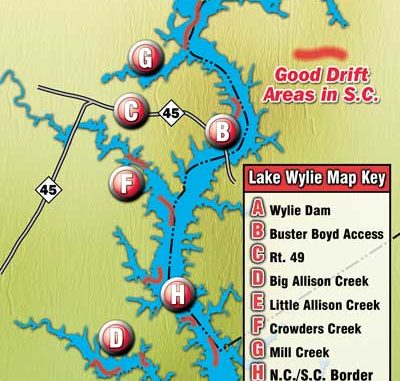
Blue cats and flatheads add dimension to Lake Wylie’s great channel catfish fishery.
Catfish anglers in South Carolina are certainly on a roll. They have enjoyed a boom the past few years, with new opportunities in more lakes.
And the good news continues to get better.Because of the influx of blue catfish and flathead catfish into Lake Wylie — and not many fishermen knowing about it — this lake may be overlooked as a prime catfish destination. Not only is the channel catfish action as great as ever, tremendous growth has been experienced in the blue and flathead fisheries the past few years. Throw in some of the finest bullhead catfish in the state, and you’ve got a catfish hotspot.
But species targeted and fishing techniques change from day to night. Channel catfish are awesome for daytime fishing for numbers and hefty fish. When the sun goes down, the big blues and flatheads take over the spotlight.
Guide Rodger Taylor fishes around the clock at Wylie, but the majority of his guide trips are for the channel cats during daylight hours.
“During the summer, I fish the large creeks and the main river channel,” Taylor said. “My primary target for daytime fishing is the channel catfish, which are super abundant in Lake Wylie. These catfish we catch average about four to six pounds. We’ll often catch blues mixed in with channel catfish on our drifts in the lower end of the lake.”
Taylor is a catfishing addict who targets the whiskered fish on several lakes in the Carolinas. Living in Rock Hill, Lake Wylie is his home lake, and he has developed an effective system for catching channel catfish in big numbers and hefty sizes.
“During June, the channel catfish in Lake Wylie will orient to the major creeks,” Taylor said. “As the summer progresses, I’ll often fish in the mainstream Catawba River channel as well. One common denominator, regardless of the specific place I fish, is there will be a significant change in the bottom contour of the lake where I’m catching catfish.”
On Lake Wylie, Taylor said, this will be in the form of a drop on a creek or river channel or a hump or underwater island at the edge of a deep hole or channel. It may also be a steep underwater ledge or bluff that falls into deep water.
Taylor said one way to target channel catfish is to drift. While it may appear to be a random effort, he said, it is a precise, controlled presentation of baits to catfish.
“I like to have enough wind to move the boat along at .4 to .8 miles per hour,” Taylor said. “The wind also helps cool things off in June and during the summer. If the wind is calm, which is an occasional issue during the summer, I’ll use the electric motor to slowly move the boat along.
“My target is to drift up and over underwater humps or ledges into the deeper water of the old creek or river bed below. When I get a good pattern for the day figured out, I can then focus my efforts in a tight depth range.”
Taylor said he will typically drift in 15 to 20 feet of water throughout June. However, when drifting over a hump or ledge, he will sometimes fish shallower, just in case the fish have moved shallow to feed.
“I’ll also begin to fish the main Catawba River channel a lot more, as well, as the water temperature rises,” said Taylor, who believes that another important part to connecting with catfish is finding their “chow.”
“It’s important to find forage,” he said. “In Lake Wylie, shad is a key. The channel catfish will also feed on white perch and bream.”
Often, Taylor will look for schools or “pods” of shad along the drops as indicators of potentially good areas. Combinations of good structure, along with forage availability, are his primary keys.
Shad, particularly cut gizzard shad, is a good bait for channel catfish, but Taylor will also drift chunks of white perch and small bream, with the heads of small perch and bream being his favored baits.
On a typical morning or half-day guide trip, Taylor said he expects to catch 20 to 25 channel cats. Normally, about 15 of those will be in the 4- to 6-pound class, with some occasionally pushing eight to 10 pounds.
When the sun goes down, the big blue and flathead catfish seem to get frisky, according to guide Chris Nichols of Belmont, N.C., who said that last summer provided outstanding fishing for big blues and flatheads on Wylie.
“It seems the big blue and flathead catfish bite better at night during the warm months,” Nichols said. “They can be caught by day, but at night, we’ll catch the big fish quite shallow.”
The best fishing for big catfish has typically been in the upper end of the lake during the past. But during the winter and early spring of 2009, Nichols caught a number of blues on the lower end.
“There’s no doubt these fish are scattering throughout Lake Wylie,” he said. “Contrary to drifting for channel catfish, I’ll anchor for the big blues and flatheads at night. There are three primary types of places I’ll set up at night. I’ll focus my efforts on long, sloping points, outside bends of the river channel and drops adjacent to flats. At night, the big catfish will readily move in to feed at any of these type places.
“On the points, I’ll anchor near the end of the point,” he said. “I cast some rigs into very shallow water, 3- to 5-feet deep. I’ll cast some off the side of the point and some into the deep water at the end of the point. All may produce, but the biggest fish usually seem to come from the shallow water. My largest flathead last summer was a 35-pound fish that came from five feet of water. The big blues will often move in shallow to feed on shad and bream at night.
“The outside bends are also excellent places,” he said. “Again, I’ll anchor where I can cast to the shallow water away from the channel, as well as to the intermediate and deep water areas. On the flats, if you spot forage when you check the area with your graph, you can anchor and fan-cast around the boat, casting some of the rigs to the edge of the channel and into the depths. Some big flatheads can be caught in this type setup.
“Some big channel catfish will also be caught at night, even though I’m using big bait to target the big blues and flatheads,” he said.
Nichols said that fishermen can rig a couple of rods with smaller baits and hooks for fast-paced action on channel cats as well.
His basic rig is 20-pound test with a 2-foot leader of 40-pound test. He’ll use a slip sinker to get the bait to the bottom and a 4/0 Eagle Claw Style 42 live-bait hook. He’ll use live bream or white perch on some rigs and cut bait on the others. He’ll catch both blues and flatheads on either type of bait at the same location, and he recommends giving a place at night plenty of time to produce.
Nichols said the fishing for flatheads and blues is already excellent but is likely to explode in the next few years.
“The population of these fish are expanding, and while the fishing is excellent now, I think we’re going to see a real boom in catfishing for all of these species at Lake Wylie in the next few years,” he said.
Both Taylor and Nichols advise that weekdays are best during the summer because of heavy pleasure-boat use on weekends. But the fishing is still good; there’s just more activity to work around.



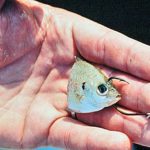
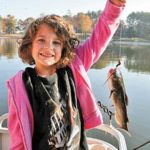

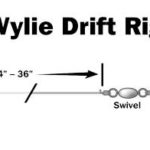
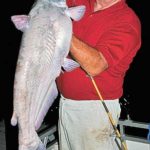



Be the first to comment